Everyday Objects
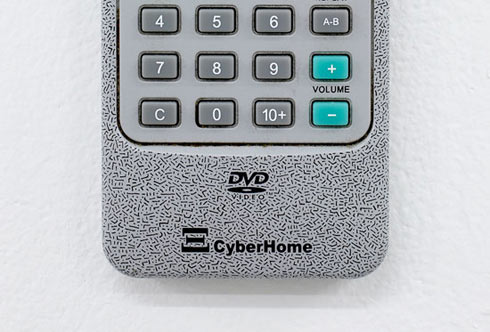
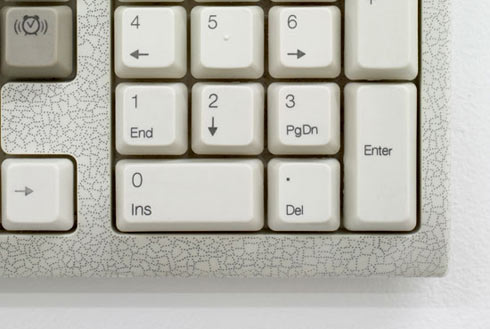
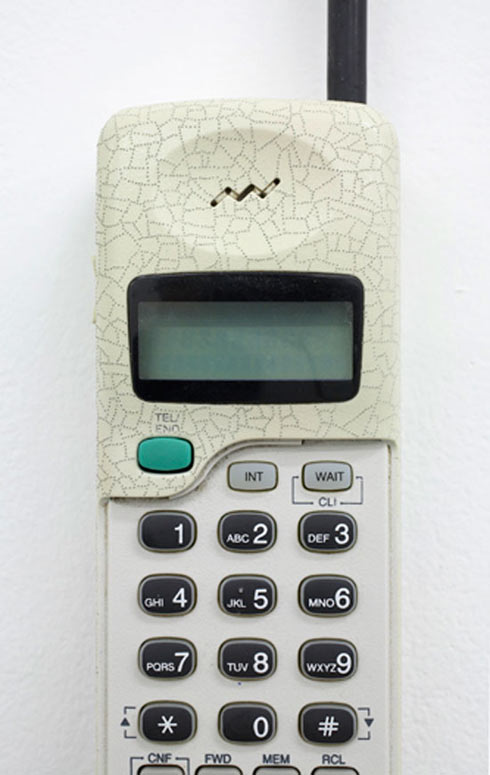
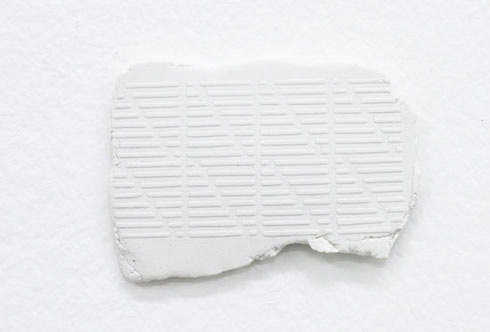
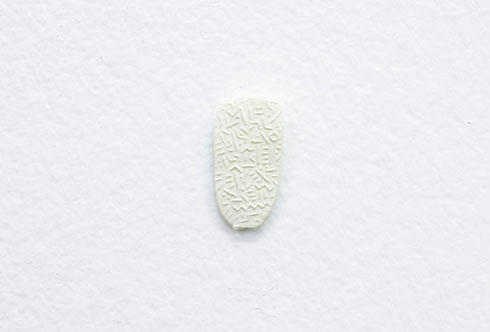
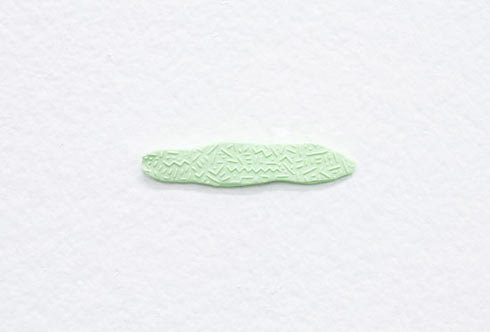
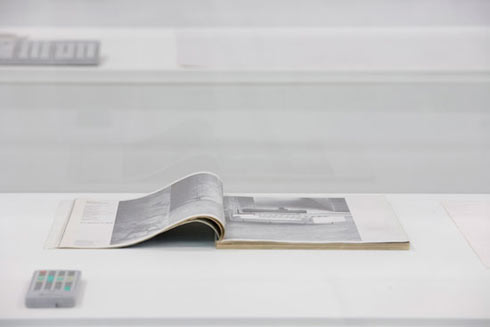
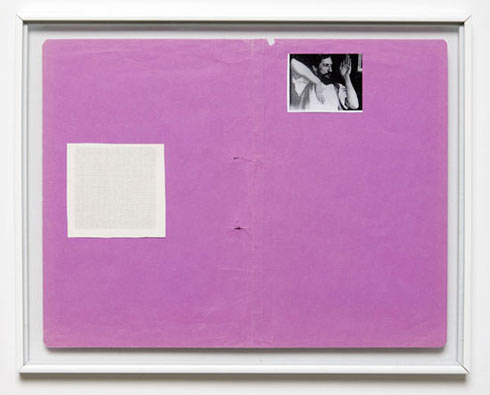
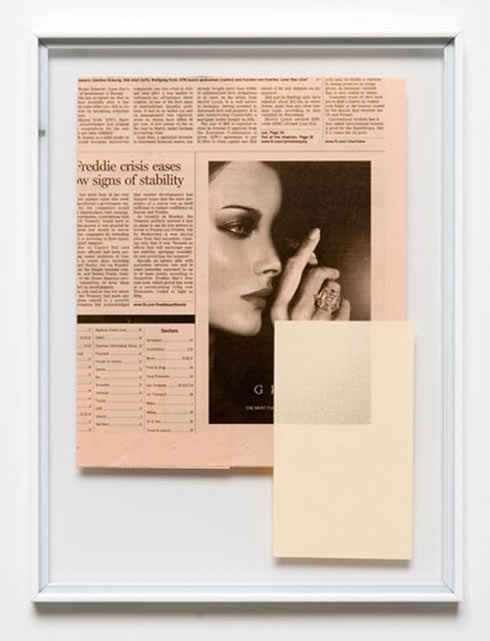
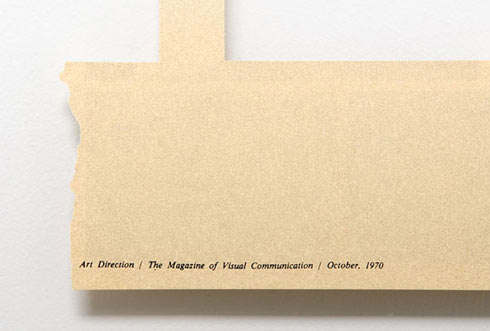
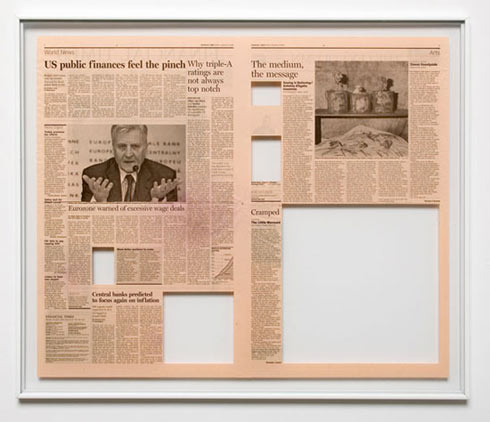
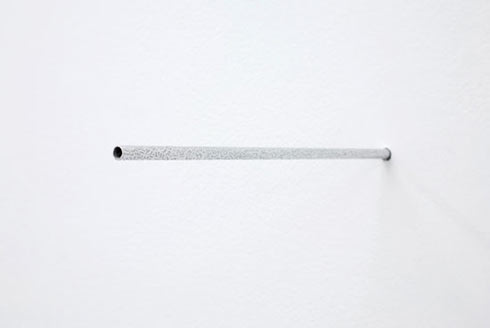 Words: Melissa Loughnan Images: Matt Hinkley
Words: Melissa Loughnan Images: Matt Hinkley
Matt Hinkley applies his distinct, highly refined hand renderings to materials including newspapers, graph paper and found objects. The meticulous yet subtle nature of his work promotes at once a quiet solitude and sense of chaos. Referencing 60s Op Art and the working methods of artists such as John Nixon, Hinkley constructs his works on paper with reverence to the qualities of his materials. Patterns and compositions are minimised and exploded, inspired by the characteristics of his paper stocks and found imagery. A recent transition to the production of 3D work has extended this sense of craftsmanship further through a series of intricate plaster impressions.
Hinkley completed a Bachelor of Visual Arts at the Queensland College of the Arts in Brisbane in 2000 and has exhibited across such spaces as the Australian Centre for Contemporary Art @ Mirka at Torlano, Gertrude Contemporary Art Spaces, Artspace, Sydney and the Perth Institute of Contemporary Art. In 2009 he exhibited at Frieze Art Fair in London through Neon Parc. Hinkley has participated in group exhibitions across Australia, New Zealand and Los Angeles, he completed an Australia Council studio residency in Los Angeles in 2009 and is a current studio artist at Gertrude Contemporary Art Spaces. He is represented by Neon Parc in Melbourne and Sarah Cottier Gallery in Sydney.
Melissa Loughnan: Some would say that your most recent exhibition at Neon Parc marked quite a departure from your previous work, however each of your recent bodies of work are unified in their subtlety and level of detail. Could you describe the thought processes in your transitioning between your 2D and object-based works, and the development of your practise since your first solo exhibition at Neon Parc in 2006?
Matt Hinkley: I think the 2006 show at Neon Parc was pretty much just straight drawing, but since then I’ve been shifting towards using mainly found objects, at first 2D and lately 3D, letting the materials dictate the mark making and trying to embed the drawing a little more subtly so that on first glance it may look like everyday smudges or creases. I think the biggest difference between these new works and some in the past is the tools I’ve been using to draw; engraving, drilling and cutting, which just naturally came about due to the fact that ink and pencil wouldn’t work as well on the things I was finding at the time.
ML: For those of us who didn’t make it to London last year, could you tell me about the work you exhibited at Frieze Art Fair through Neon Parc?
MH: The primary work for Frieze was a collection of found objects with various drawn interventions including books, magazines, newspapers, computer equipment, large sheets of paper etc, quite similar to the recent Neon Parc work, the main difference between the two was that at Frieze all the work was shown in two large vitrines, had a more considered museum aesthetic and were collected together as one large work.
ML: How was it received?
MH: Well I think! I found it hard to tell personally only being there on the opening night but the gallery got some good interest, which will hopefully lead to some more opportunities overseas.
ML: Does the work that you make for an institutional/not for profit space vary from the exhibitions that you’ve produced in commercial spaces? i.e. Neon Parc or Sarah Cottier Gallery in comparison to your ACCA @ Mirka at Torlano show?
MH: I think its pretty much the same approach no matter where I’m showing, I usually just try to keep it simple.
ML: Back to the object-based work that you made for your recent exhibition at Neon Parc, a series of intricately detailed plaster impressions and ornately penned found objects, was this work aiming to comment on the resurgence of anti-skill art, or of the rise of readymade sculptural assemblage?
MH: I wouldn’t say I’m making a comment on these trends, I enjoy a lot of that kind of work but lately I’ve been getting into very skilled traditional crafts things like traditional Japanese metal work and industrial design of the 80s and 90s where pattern and tactility were really important in the design of everyday objects. As far as the readymade goes I’m less interested in the art historical references than the way it fits with an overall pragmatic approach of making do with what’s readily at hand.
ML: Has your involvement in graphic design influenced the way that you make work, and your conceptual and aesthetic concerns?
MH: My involvement in graphic design as a day job doesn’t really influence my work, I actually came to that just by designing invites to my own shows, but I have had a long running interest in design and there is definite common territory. I am interested in the possibility for some of the work to be seen almost as propositions to be used within the design world.
ML: Yes I find cross overs between design, art and various other creative disciplines really interesting and think that spaces such as The Narrows, where you have previously exhibited, have investigated this really well. Apart from your recent Japanese metal work and 80s and 90s industrial design influences, what other references have you cited in the production of your work? Previous writing on your work has referenced an association with 60s Op Art, are there other artists or art movements that inspire or have inspired your work?
MH: John Nixon has been a real influence, his simple ‘punk’ working method makes real sense to me, but also people like Katherine Huang whose work is completely instinctual; Stan Brakhage’s film Mothlight, which was made when he was completely broke by using the remains of dead moths stuck to the film strip, is a great example of art being made with limited means.
ML: Looking forward, what’s next on the agenda?
MH: I’m looking forward to experimenting with some new materials like porcelain and the colouring and patination of metals and I’ve got shows solo shows coming up later this year at Sarah Cottier Gallery in Sydney and Gertrude Contemporary Art Spaces in Melbourne.
Next story: Bringing In The Books – Even Books



